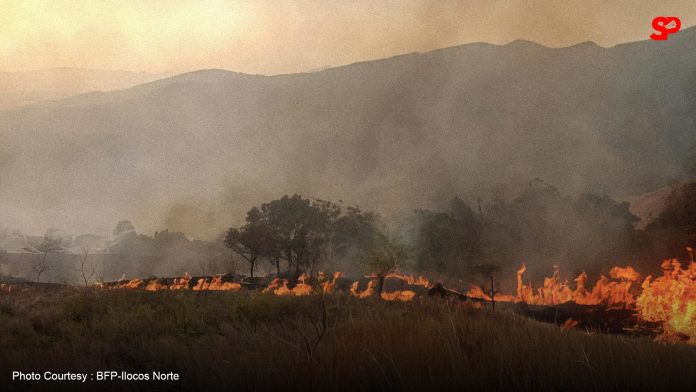By Michelle Ducut
As the forest fire season approaches, the province of Ilocos Norte is revisiting proactive strategies to prevent wildfires, which are common from January to March. Governor Matthew Joseph Manotoc on Tuesday urged mayors from the province’s 21 towns and two cities to prepare by reviewing and enhancing previous measures.
“Before the year ends, let us align and prepare for next year. Let us revisit some of the strategies we used before such as the establishment of checkpoints, placement of trucks, water sourcing, and air assets, including discussion on the possible livelihood projects with the Indigenous Peoples,” Manotoc said during a meeting of the Provincial Peace and Order Council and Barangay Anti-Drug Abuse Council at the Capitol session hall.
In past fire seasons, police checkpoints and a registry of civilians heading into mountainous areas were implemented in Solsona, Nueva Era, and Piddig, where a series of forest fires had occurred. These measures aimed to monitor and limit activities that could trigger wildfires.
The Bureau of Fire Protection (BFP) identified several causes of forest fires in the province, including open flames from rubbish fires, smoking, embers igniting materials, slash-and-burn farming (kaingin), discarded lit cigarettes, and open flames used for cooking or hunting. Other factors include electrical ignition from loose connections, fireworks, overheated appliances, and kerosene lamps.
While no forest fires have been reported in the last quarter of 2024, the BFP, in coordination with the Ilocos Norte government, has continued to strengthen its fire prevention efforts. Assistance from the 4th Marine Brigade, the Philippine Army, and local disaster risk reduction and management units has been enlisted to sustain fire prevention measures.
Key strategies include regular patrols in forested areas and the hiring of additional forest rangers to monitor and mitigate potential fire risks. Wildfires in the province are often classified as “accidental fires,” frequently caused by dry weather conditions, human activities such as agriculture waste burning, and carelessness from campers, hikers, and wildlife hunters.

